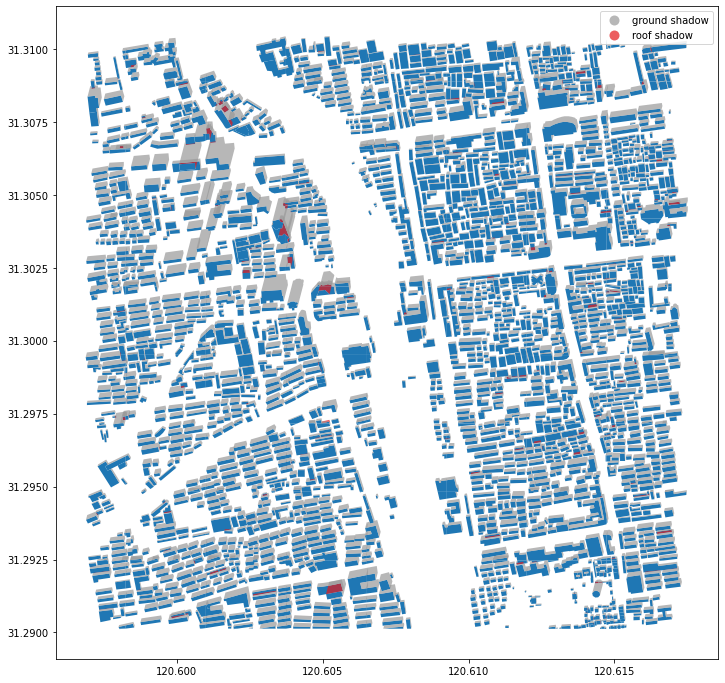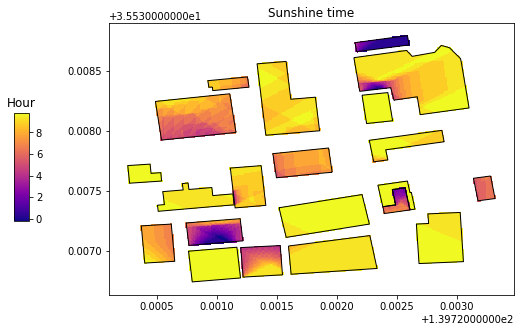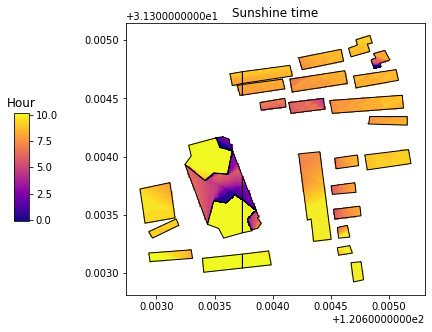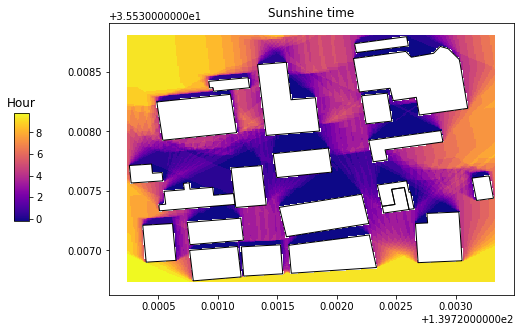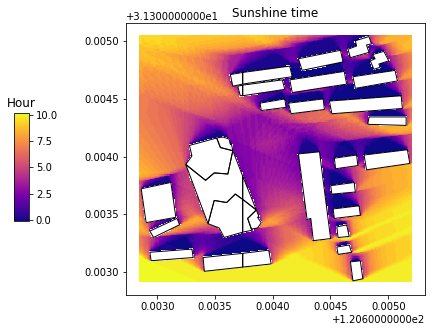pybdshadow is a python package for generating, analyzing and visualizing building shadows from large scale building geographic data. pybdshadow support generate building shadows from both sun light and point light. pybdshadow provides an efficient and easy-to-use method to generate a new source of geospatial data with great application potential in urban study.
The latest stable release of the software can be installed via pip and full documentation can be found here.
Currently, pybdshadow mainly provides the following methods:
- Generating building shadow from sun light: With given location and time, the function in
pybdshadowuses the properties of sun position obtained fromsuncalc-pyand the building height to generate shadow geometry data. - Generating building shadow from point light:
pybdshadowcan generate the building shadow with given location and height of the point light, which can be potentially useful for visual area analysis in urban environment. - Analysis:
pybdshadowintegrated the analysing method based on the properties of sun movement to track the changing position of shadows within a fixed time interval. Based on the grid processing framework provided byTransBigData,pybdshadowis capable of calculating sunshine time on the ground and on the roof. - Visualization: Built-in visualization capabilities leverage the visualization package
keplerglto interactively visualize building and shadow data in Jupyter notebooks with simple code.
The target audience of pybdshadow includes data science researchers and data engineers in the field of BIM, GIS, energy, environment, and urban computing.
It is recommended to use Python 3.7, 3.8, 3.9
pybdshadow can be installed by using pip install. Before installing pybdshadow, make sure that you have installed the available geopandas package. If you already have geopandas installed, run the following code directly from the command prompt to install pybdshadow:
pip install pybdshadowDetail usage can be found in this example.
pybdshadow is capable of generating shadows from building geographic data.
The buildings are usually store in the data as the form of Polygon object with height information (usually Shapefile or GeoJSON file).
import pandas as pd
import geopandas as gpd
#Read building GeoJSON data
buildings = gpd.read_file(r'data/bd_demo_2.json')Given a building GeoDataFrame and UTC datetime, pybdshadow can calculate the building shadow based on the sun position obtained by suncalc-py.
import pybdshadow
#Given UTC datetime
date = pd.to_datetime('2022-01-01 12:45:33.959797119')\
.tz_localize('Asia/Shanghai')\
.tz_convert('UTC')
#Calculate building shadow for sun light
shadows = pybdshadow.bdshadow_sunlight(buildings,date)Visualize buildings and shadows using matplotlib.
import matplotlib.pyplot as plt
fig = plt.figure(1, (12, 12))
ax = plt.subplot(111)
# plot buildings
buildings.plot(ax=ax)
# plot shadows
shadows['type'] += ' shadow'
shadows.plot(ax=ax, alpha=0.7,
column='type',
categorical=True,
cmap='Set1_r',
legend=True)
plt.show()pybdshadow also provide visualization method supported by keplergl.
# visualize buildings and shadows
pybdshadow.show_bdshadow(buildings = buildings,shadows = shadows)pybdshadow can also calculate the building shadow generated by point light. Given coordinates and height of the point light:
#Calculate building shadow for point light
shadows = pybdshadow.bdshadow_pointlight(buildings,139.713319,35.552040,200)
#Visualize buildings and shadows
pybdshadow.show_bdshadow(buildings = buildings,shadows = shadows)pybdshadow provides the functionality to analysis sunshine time on the roof and on the ground.
Result of shadow coverage on the roof:
Result of sunshine time on the ground:
pybdshadow depends on the following packages
numpypandasshapelyrtreegeopandasmatplotlibsuncalckeplerglTransBigData
Citation information can be found at CITATION.cff.
All contributions, bug reports, bug fixes, documentation improvements, enhancements and ideas are welcome. A detailed overview on how to contribute can be found in the contributing guide on GitHub.

